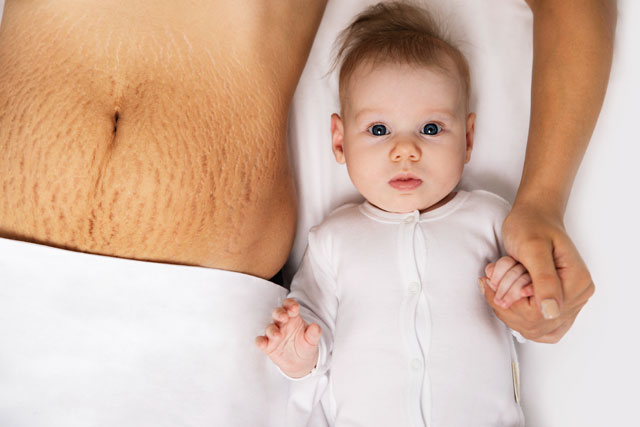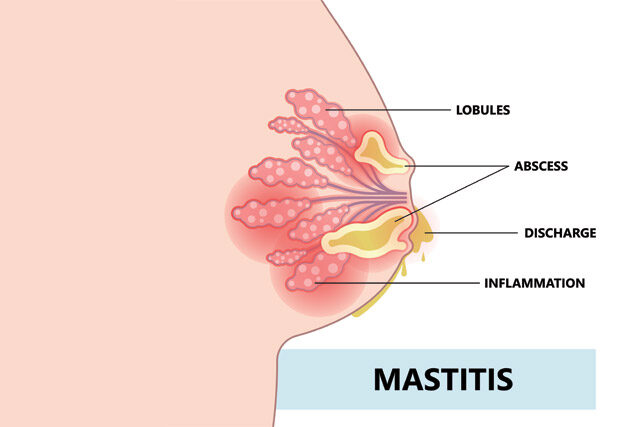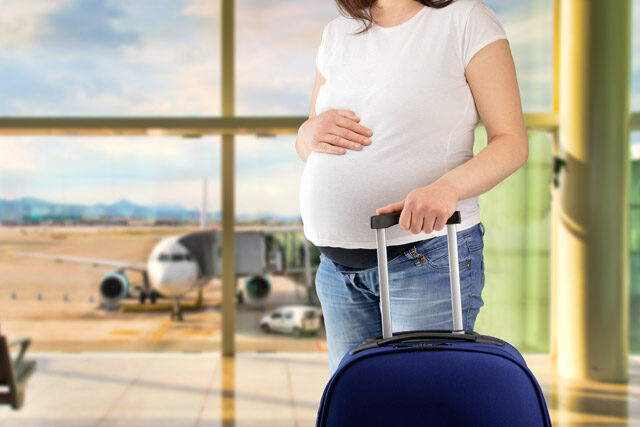The British National Health Service says that eight out of ten mothers-to-be will have stretch marks after pregnancy. Some new moms feel grateful to their body for growing a new life and take stretch marks as a privilege they can be proud of. Others have a hard time accepting the new appearance of their bodies. Both are normal, and both are understandable.
Still, as studies say, 78.2% of pregnant women use some cosmetic products to prevent stretch mark appearance. So, is there a recipe on how to prevent pregnancy stretch marks? Is there a way to avoid this skin condition? What can you do to make them less visible if you fail at preventing them? We hope you’ll find all the answers below.
What Are Pregnancy Stretch Marks?
Stretch marks are the lines within your skin. They are usually narrow but may get wide, which depends on how severe the stretching is. Pregnancy stretch marks can vary in color from pink and red to purple. Eventually, they will fade to white or silver-like. The bad news is they will never resolve on their own and will stay with you forever unless you apply one of the methods we’ll be speaking about later.
The color of your stretch marks strongly depends on your natural skin color. People with pale white skin will have them reddish and, therefore, more visible than those who have darker skin shades.
Typically, striae distensae, as they are also called, appear on your lower abdomen, around the belly button, on the hips, thighs, bottom, and breast.
What Causes Stretch Marks during Pregnancy?
Although stretch marks can be present in people who have never been pregnant, they are still more likely to appear in expecting mothers. The reasons for getting women’s stretch marks while expecting a baby vary. Among them, there are:
- rapid weight gain;
- enhanced belly circumference along with the pressure of the baby and the water on the skin;
- certain vitamin deficiency;
- skin dryness;
- genetic predisposition;
- hormonal changes that affect skin elasticity;
- skin type (women with lighter skin tend to be more prone to stretch marks).
When Do Stretch Marks Appear?
There is no exact point or gestational week when you can notice your first stretch mark. It’s very individual and depends on many factors, including:
- How much weight you have already put on.
- How many fetuses you have growing inside (in multiple pregnancies, the belly grows faster, so the risk of stretch marks grows, and they may appear earlier than if you were pregnant with only one baby).
- The type of skin you have.
- Your nutrition and so many more.
In many cases, a woman may notice her first stretch marks being around 18 weeks pregnant. Still, you may not have them until your third trimester, so everything is very individual.
How to Prevent Pregnancy Stretch Marks?
Stretch mark prevention implies a complex approach to your health and pregnancy skin care. You have to work from the inside and the outside of your body to succeed. What we mean by saying this is that you should keep an eye on what you eat and how much you drink and ensure proper topical skin care.
But even if you follow all the recommendations of your doctor regarding stretch mark prevention and still get them, don’t get too disappointed. The main thing is that you have a precious baby in your arms who will love you regardless of whether you have stretch marks on not.
Let’s take a look at the options on how to prevent pregnancy stretch marks.
Weight Control
Among the most common causes for the appearance of stretch marks in a pregnant woman is rapid weight gain. The skin cannot keep up with the growing size of your belly and hips, so it stretches, eventually creating the striae.
By controlling your weight gain and slowing it down, you can give your skin enough time to accommodate and expand. A healthy diet is a clue to your body mass control. Ask your doctor for a meal plan that will satisfy your needs in calories and nutrients but will allow keeping you away from fast weight gain.
Stay Hydrated
By staying hydrated, you can make your skin more elastic and soft. Properly hydrated skin is less prone to breaking, which allows for avoiding striae. Healthcare specialists say that consuming enough water is the best way to prevent pregnancy stretch marks.
Please note that tea and especially coffee can cause the opposite effect due to the presence of caffeine in them. So pure water is the best choice.
Vitamins and Zinc
Although there is not a lot of scientific evidence of vitamin deficiency being responsible for stretch marks appearing during pregnancy, some studies have found a link between lower serum levels of Vitamin D and a higher occurrence of striae distensae. This is explained by the role of this vitamin in skin regulation.
Vitamin C is another nutrient essential for healthy skin. It stimulates the synthesis of collagen – a protein responsible for skin elasticity.
As for zinc, it is known for its anti-inflammatory properties and is widely used in dermatology. While there is no evidence supporting the positive effects of zinc on stretch marks prevention, it will still be useful for your skin and overall health.
Enrich your diet with fruits and veggies and other food rich in nutrients to get maximum benefit.
Oils and Creams
Oils and creams are aimed at topical moisturizing the skin. Applying them daily, you can boost your skin elasticity and avoid striae. Still, the effectiveness of different products is not the same high. Based on the studies, Trofolastin and Alphastria creams showed some evidence of efficacy as a preventative treatment for stretch marks. The effectiveness of tretinoin (a retinoid-containing cream contraindicated during pregnancy) was rather controversial. As for cocoa butter and olive oil, they failed to demonstrate any positive effect.
Exercises
Physical activity and moderate exercising during pregnancy will help you keep your weight under control, as well as help enhance circulation and make your skin more elastic. If you have no contraindications to physical activity, make it a part of your daily routine: go swimming, try Pilates or yoga for pregnant.
Massage
How to stop stretch marks if they have already appeared? Massaging your hips, chest, and abdomen during pregnancy may help reduce the number of stretch marks as well as make them faint. Please, note that massaging the belly is not recommended in women at risk of premature birth and those in the third trimester, as this may trigger contractions. So you’d better check with your clinic to ensure it’s safe.
Chemical Peel
If you don’t manage to prevent pregnancy stretch marks, don’t worry. There are ways to get rid of them. A chemical peel is one of those you can use during and after pregnancy. The lack of scientific evidence regarding the safety of certain types of chemical peel during pregnancy significantly limits the choice of procedures you can address while expecting a baby.
Nevertheless, scientists say that expecting mothers can safely use lactic acid and glycolic peels. On the other hand, they should refuse salicylic and trichloracetic acid peels until they give birth and finish breastfeeding.
Laser Therapy
Laser therapy is an effective method to fade striae and make your skin look better and smoother to the touch. The effectiveness of this procedure greatly depends on the severity of the stretch marks and your skin type.
The treatment of stretch marks during pregnancy is not recommended. However, this has little to do with safety reasons. It is recommended to postpone it to at least half a year postpartum, and here is why.
If you hurry with laser treatment and do it while still pregnant, you may get other striae, meaning you’ll have to repeat the procedure. What’s more, after giving birth, the marks will gradually fade. Therefore you’ll require fewer procedures to get rid of them. Overall, it’s all about time and money saving.
Microfocused Ultrasound
This is one of the newest and most effective methods of treating stretch marks. Although this method is not intended to prevent stretch marks, it does work wonders for smoothing them and making them less visible.
Microfocused ultrasound generates deep skin layer heating, which is beneficial for skin tightening. Studies prove that this method is effective, and 70% of patients are satisfied with the results they’ve achieved.
Unfortunately, there is no sufficient data regarding the safety of this procedure in pregnant persons. So you’d better go for it when you already have your baby born.
Treat Fresh Stretch Marks When They Appear
Dermatology specialists generally recommend treating stretch marks as soon as possible. Like any scar, which they actually are, they tend to respond to the treatment better when they are still fresh. If you want to use radical methods, like laser therapy, or microfocused ultrasound, the best time for them is at least three to six months after delivering a baby.
Delaying the treatment makes it more challenging as older and deeper striae are more difficult to handle. Still, this doesn’t mean such treatment is pointless, it’s just more lasting.
Summary
Getting stretch marks during pregnancy is natural. And though they have no negative influence on your physical health, they can give you hard times emotionally. Not all women can accept the new reality of their bodies, and it’s fine that they want to get rid of those marks. Luckily, they have many options available for the prevention and treatment of striae. So even if you fail to avoid them, keep calm and start choosing among the treatment options you have.
FAQ:
When can I expect my stretch marks to go away?
Unfortunately, there’s no way they can go away completely, but they will gradually faint and get less visible.
Are stretch marks painful or dangerous?
No, they are not. However, they may affect your self-confidence and mental health overall.




